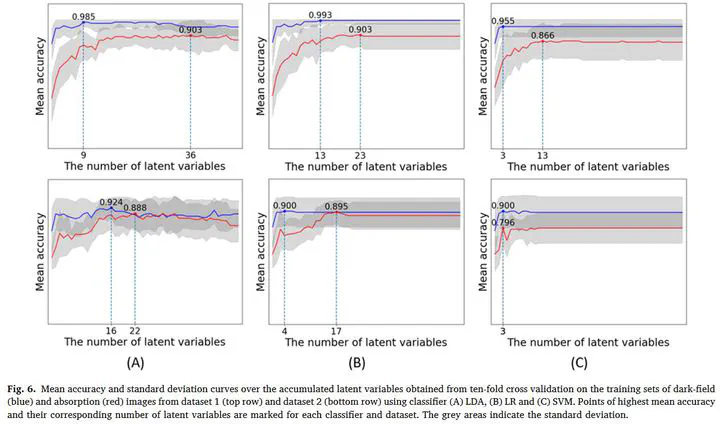Nondestructive internal disorders detection of ‘Braeburn’ apple fruit by X-ray dark-field imaging and machine learning
May 3, 2024· ,,,,,,,·
0 min read
,,,,,,,·
0 min read
Jiaqi He
Leen Van Doorselaer
Astrid Tempelaere
Janne Vignero
Wouter Saeys
Hilde Bosmans
Pieter Verboven
Bart Nicolai

Abstract
’Braeburn’ apples are susceptible to internal browning disorders when stored under controlled atmosphere (CA) conditions with unfavorable gas compositions. The progression of CA-related disorders in apple tissues is dy namic, noting a decrease in porosity during early storage due to cellular breakdown and pore flooding, and an increase in porosity in later stages due to structural collapse and cavity formation. Utilizing grating-based X-ray dark-field radiography, which leverages X-ray small-angle scattering to detect microstructural changes below the pixel scale, this study assesses the technique’s efficacy in identifying internal disorders in ’Braeburn’ apples at both early and later stages. A machine learning approach was applied to compare the diagnostic capabilities of dark-field imaging with those of X-ray absorption radiography at identical image resolutions. Results indicate that for early-stage disordered fruit detection, X-ray dark field radiography is 10 % more accurate than absorption radiography, regardless of the machine learning classifiers that were applied. In the later stage of browning, dark-field imaging performs similarly to absorption imaging. High-resolution micro-computed tomography scans suggested that the distinct detection performance of dark-field imaging may be attributed to the more pronounced microstructural differences between healthy and early-stage defective tissues than those between healthy and later-stage defective tissues. The insights from this work will guide the application of X-ray dark-field systems in fruit quality assurance, particularly in detecting internal disorders.
Type
Publication
Postharvest Biology and Technology